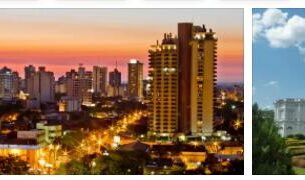Of the 30 and a half million residents surveyed in 1920, about one and a seventh were from the Federal District, more than 28 and a half million to the states, and less than a tenth of a million to the territory of Acre. Of the 20 states of the Confederation, 3 had a population between 6 and 3 million (1 inland, Minas Geraes, and 2 Atlantic, San Paolo, Bahia); 7 a population between 2 million and a fifth and a million (all Atlantic: Pernambuco, Rio Grande do Sul, Rio de Janeiro, Ceará, Pará, Alagôas, Parahyba), 7 oscillated between just over half a million and just under a million (6 Atlantic and 1 internal: Maranhão, Paraná, Santa Catharina, Piauhy, Rio Grande do Norte, Goyaz), 3 had less than half a million (1 Atlantic and 2 internal: Espirito Santo, Amazonas, Matto Grosso). Apart from the Federal District which had 983 residents per sq. km., the maximum density was recorded in the state of Rio de Janeiro with 37 residents per sq.km.; the least in that of Matto Grosso where 2 residents were not reached for every 10 sq. km. (0.17 per sq. Km.). In 8 states (Alagôas, Sergipe, Pernambuco, S. Paolo, Parahyba do Norte, Rio Grande do Norte, Espirito Santo, Minas Geraes) the density varied between 34 and 10, and in 7 between 9 and 2.5 (Ceará, Rio Grande do Sul, Santa Catharina, Bahia, Paraná, Maranhão, Piauhy). In the 4 states of Goyaz, Parȧ, Amazonas, Matto Grosso which together with the Acre territory have a total area of almost 5 and a half million sq km, the density did not reach 1 resident per sq km, so for these we can speak of large areas almost depopulated.
According to cachedhealth, this notable difference in density and the existence of the now called isolated nuclei, and therefore provided with different or even contrasting traditions and tendencies, have always constituted the main obstacle to the unification of the country, and against it they had to fight in the colonial period. governors and viceroys, as well as during the empire the government of Rio de Janeiro opposed a centralizing policy to the centrifugal movement of the various provinces. And when, after the empire fell, the provinces became autonomous states according to the federative system inaugurated with the republican constitution of 1891, one of the fundamental concerns of the Union government was to react against the various elements of dispersion of economic and political life. of the country.
The density of the population is, as has been said, the result and index of the various natural and climatic factors: in fact, the rapid examination of the distribution of the population in the individual states brings to mind the fundamental difference between the living conditions presented by the Brazilian Amazon and those offered by the plateau and by the coastal and sub-coastal regions of the south, where the relatively high elevation mitigates the conditions of the tropical and subtropical climate, allowing an intensity of agricultural production and an intensification of the livestock industry, which only limited to very small areas, it can be found in some northern states. Particularly typical is the contrast between the population density of the states of Rio de Janeiro (37) and S. Paolo (19), whose total area is less than 290,000 sq. km. does not even correspond to 3 and a half per cent of the total area, and the population density of the internal states of Goyaz (0.8) and Matto Grosso (0.17), whose total area corresponds instead to 25 per cent of whole territory. So remarkable is the contrast between the population density of the states of Alagôas (34) and Pernambuco (22), whose total area corresponds to just over one and a half percent of the entire territory, and the population density of the Amazonian states (Amazonas 0.2; Pará 0.7), the total area of which corresponds to more than 37 percent of the entire territory.
These figures represent salient contrasts between areas and areas: but they can only minimally account for the way in which the population is effectively distributed in the vast Confederation; which could be obtained not by taking as the basis of the calculation the political units of such varied and often so vast extension, but smaller regions and with more precise natural characteristics. Thus, leaving aside the Federal District, where in 1920, the density of the terrestrial population reached, as mentioned, the value of 983 residents per sq. Km., Our attention can focus particularly on the distribution of the areas where particular calculations, such as those by Pierre Denis, allow to verify a density greater than 60 residents or variable between 30 and 60 per square kilometer. Reconcavo). The inland area north of the 30th southern parallel, which extends west of Porto Alegre and embraces the territories of the main German and Italian colonies of Rio Grande do Sul, belong to the second series; part of the coastal region of Santa Catharina and Paraná; that extended essentially to NO. of S. Paolo; that which includes most of the state of Rio de Janeiro, and those areas that border, respectively, to the west or to the west and north, the two aforementioned areas of high density of Bahia and Recife.



